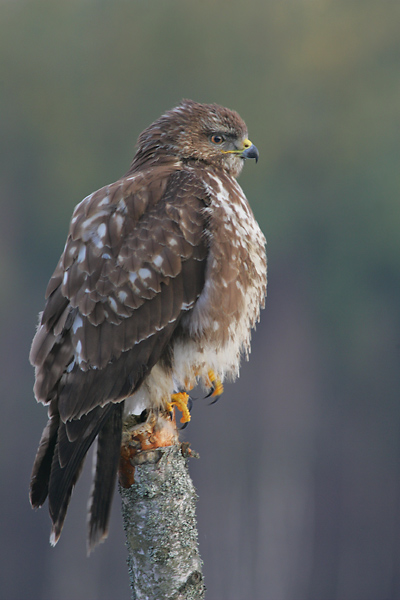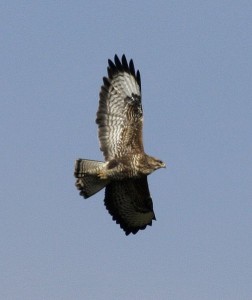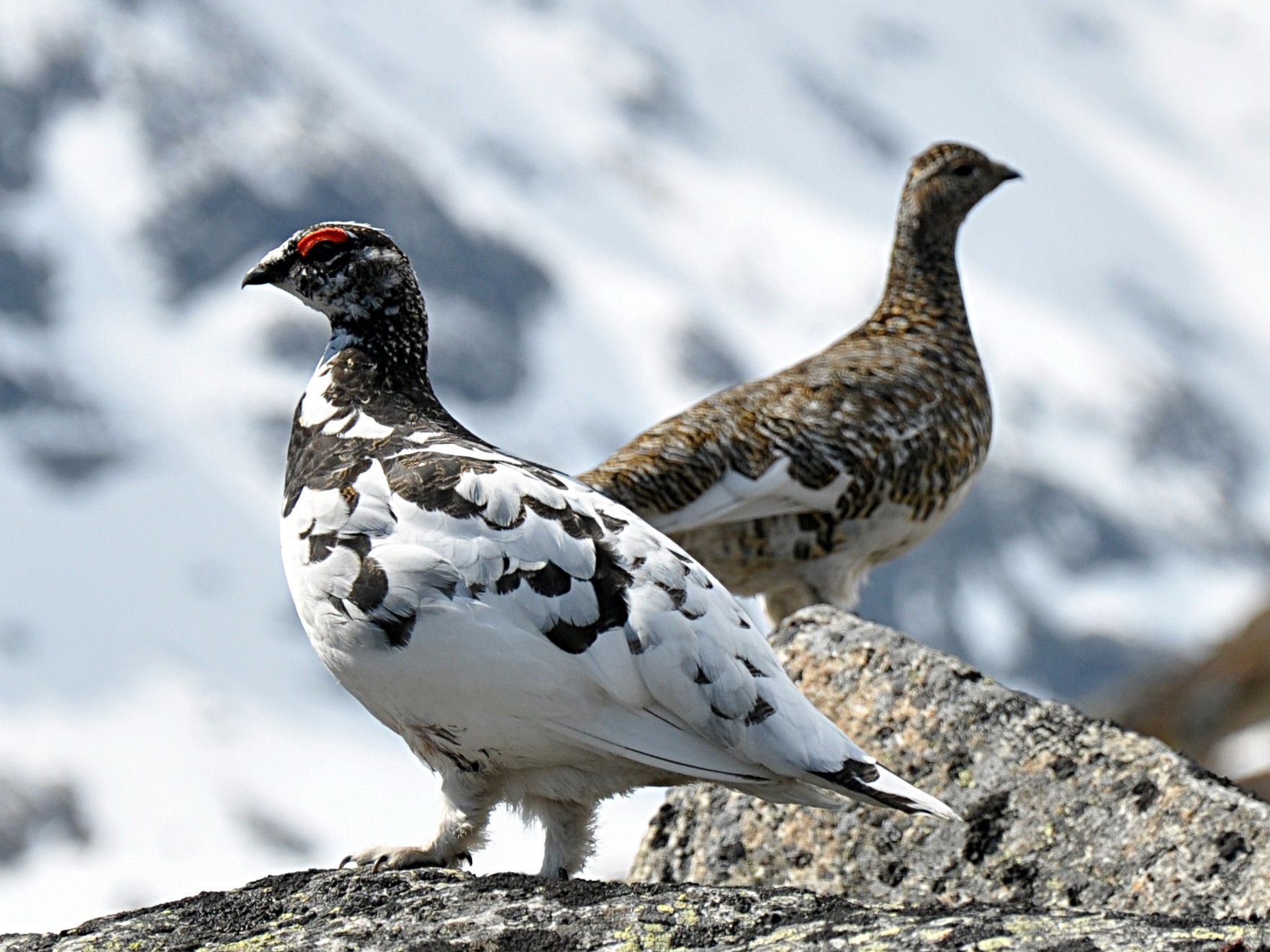
After spending the entire day outside, the fresh air is starting to catch up with me and I am getting awfully tired. If I fall asleep while writing this post, would you be kind enough to wake me up? Today we are heading to the skies to learn about a pretty cool raptor. No not the dinosaur kind and definitely not the basketball team. This particular bird of prey is the Common Buzzard, which can be found throughout most of Europe and into Asia.
The Common Buzzard is a medium to large sized bird of prey with an average length between 51 – 57 cm (20 – 22″) and a wingspan measuring between 1.0 – 1.5 m (4 – 5′). I would definitely not want to see that thing dive bombing out of the sky towards me. Typically this Buzzard is a solitary animal that prefers to hunt on their own. During migration they may form small groups with up to 30 individuals. This makes a lot of sense since nobody wants to go on a road trip by themselves.
As with most birds of prey, small animals should be careful coming out of their hiding places while in Buzzard territory. The Common Buzzard is an opportunistic hunter that will feed on rodents, birds, insects, snakes, earthworms and of course carrion (dead animals). This particular bird of prey is a fast and agile flier. As a result they don’t have too many predators to worry about on a day to day basis. Occasionally they will be attacked in the air by larger birds such as Eagles. If they are caught snoozing on the ground then predators such as cats and foxes may try to catch them.

Although they are solitary animals the Common Buzzard are dedicated mates. Once a pair forms they will mate for life. Isn’t that sweet! The female will typically lay 2-4 eggs which will hatch after a month of incubating. The parents will stay with the chicks for about 45 days before the little ones are kicked out of the nest to find their own way. They grow up so fast, don’t they? This may not be surprising to all of you wives out there but it is typically the female that raises the chicks during those 45 days.
Common Buzzard Fast Fact – At one point in time the Common Buzzard was just about wiped out of the United Kingdom. Today, however, these buzzards are among the most common raptors in Europe (only behind the common Kestrel). Nice to have a good news story once in awhile, isn’t it?






